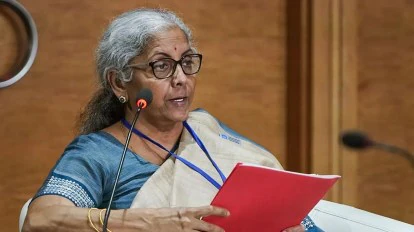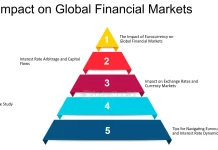According to Union Finance Minister Nirmala Sitharaman, the Goods and Services Tax (GST) receipts as a percentage of GDP have returned to pre-GST levels. This was announced on Monday. It is a fallacy that all GST collections are “pocketed by the Centre,” according to Sitharaman, who also highlighted the milestones reached under the GST regime and said that GST considerably increases state revenues.
On the day when she swore in Justice (Retd) Sanjaya Kumar Mishra to serve as the President of the GST Appellate Tribunal (GSTAT), Sitharaman made her statement. With Mishra’s nomination, the GSTAT, an important forum for settling disputes pertaining to the Goods and Services Tax (GST) will now begin to function. The GSTAT was established in July 2017 and had not been operationalized for almost seven years.
According to the monthly data for April provided on May 1 by the Finance Ministry, the monthly total GST collections have been increasing and have just passed a milestone of Rs 2 lakh crore.
As a percentage of GDP, GST collections have now returned to pre-GST levels, even though the GST rate was lower than the required Revenue Neutral Rate and COVID-19 had an impact on revenues. This includes both net and gross GST collections. In a post on the social media site X, formerly known as Twitter, Sitharaman wrote, “This demonstrates that the Centre & States, collectively, are able to collect the same revenue with a lower burden on our taxpayers.”
Sitharaman stated that GST “exemplifies cooperative Federalism in India, empowering states” and that it has increased state tax viability. “The idea that the Centre keeps all GST revenues is untrue. States receive 100% of the SGST and roughly 50% of the IGST (i.e., on interstate trade) collected in their jurisdictions. This means that GST plays a major role in state revenue collection. Based on the Finance Commission’s proposals, the states receive a substantial amount of the CGST, or 42%. Tax buoyancy has increased under the GST from 0.72 (pre-GST) to 1.22 (2018–23). State revenues are still strong at 1.15 even though compensation is ending, she noted.
States would have received Rs 37.5 lakh crore in revenue from subsumed taxes between FY19 and FY24 if there had been no GST. According to her, states’ actual revenue under GST was Rs 46.56 lakh crore.
The Finance Minister said that the effective weighted average GST rate has continuously decreased since 2017, citing this as a pro-poor strategy. She stated, “The Revenue Neutral Rate was estimated to be 15.3%, but it was lower at 14.4% in 2017 and has dropped to 11.6 % in 2019.”
Former Chief Economic Adviser Arvind Subramanian noted on May 2 on X that “GST revenue for FY24 @ 6.1 per cent of GDP has still (after 7 years) not surpassed pre-GST level,” despite better implementation and economic recovery. He had claimed that pre-GST levels had been exceeded in the first half of FY24, but the forecast for FY24 indicated otherwise. He had stated, “…the focus needs to be on revenues, net of refunds, not on headline collections.”
In her capacity as the GST Council Chair, Sitharaman claimed to have “ensured all states’ voices are equally heard without bias.” The GST Council allocates two thirds of its voting power to the states and one third to the centre, with a seventy-five percent majority vote requirement. “All but one of the 52 meetings’ decisions were made by consensus. “As the Chair of the GST Council, I have made sure that every state’s voice is heard fairly and impartially,” she declared.
In addition, she stated that compared to pre-GST rates, the GST has reduced taxes on a number of necessities. Numerous necessities, including unbranded food products, some life-saving medications, healthcare, education, public transportation, sanitary napkins, hearing aid parts, agricultural services, etc., are excluded from the GST. Commonplace products like soaps and hair oil now only pay 18% tax, while electrical equipment now only pay 12% tax instead of 31.5 %. “The tax on movie tickets was also reduced.” Since 2017, more tax rate rationalisation has been carried out. According to her, the National Anti-profiteering Authority made sure businesses passed on the benefits to customers.





























